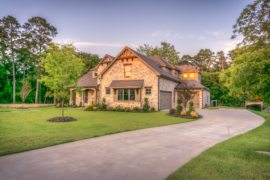Last Updated on Jan 8, 2023 by James W
Designing and building a new home is an exciting process, but it can also be overwhelming. Split-level homes allow you to combine modern and traditional designs, creating living spaces that both maximize natural light while offering the freedom to customize your home’s overall look and feel. In this guide, we’ll provide valuable information on how to begin the process of designing and building your split-level home.
Understanding the Basics
Before beginning construction, it is important to thoroughly assess your site’s terrain and determine access considerations. As with all single-family residences, your home must meet local codes relating to minimum building line setbacks as well as height restrictions in order to pass inspection later down the road. The structure of split-level house plans should be familiar to anyone who has built or inspected other types of single-story dwellings in the past – but with one key difference: when you build a split-level home there are often two distinct stories or levels involved; separated by “steps” created by differences in elevation between adjacent floors.
The best way to ensure this layout works for you is to ensure that any entrance doorways on either floor are able to handle any potential changes in grade between them; including adding outside stairs if necessary. Be sure that you also consider creating room for potential storage space either within the bottom floor or somewhere else on the property.
Identifying Your Needs and Wants
This includes both the functional and aesthetic styles that would make the home comfortable, attractive and unique. If possible, have a list of must-haves and above-and-beyond features that you would like to add which can be used as goals while designing. Consider all areas of the home, such as kitchen size, number of bedrooms, and comfort features like hiding places for cats or extra storage space. Additionally, think about the aesthetic preferences for each space that will give you an overall look for your house.
Choosing a Floor Plan
Floor plans for split-level homes are typically more complex than those for single-story homes because there are multiple levels. When choosing a floor plan, consider the living areas that you need to accommodate and the number of bedrooms and bathrooms that fit into your budget. Think about routines of everyday life and how the home’s layout can support them. Do you have kids who might need easy access to their bedrooms? Do you entertain often and need a separate space for guests? Your answers will shape which floor plan works best for your lifestyle.
Once you know the basic needs, consider the size of features such as bedrooms, bathrooms, closets, and hallways along with traffic flow when selecting a floor plan. You should also pay attention to storage needs — both in and outside the home. Will your family require larger entrances to accommodate sports equipment or recreational gear? How do interior stairs fit into your plans? Consider how each part of the house connects together to create an organized flow within each level of the home.
Budgeting and Financing
Establishing a realistic budget for your project is necessary in order to ensure that you can complete the work within your expected timeline and financial limits. Take into account upfront costs, such as the cost of hiring an architect or engineer, obtaining proper permits, demolition, and clearing in addition to ongoing costs like estimated labor costs and material supply expenses.
Determine if you have enough money saved up for the project or if there are other sources, such as loans or grants that could help fund the project. It’s best to consider multiple financing options to find one that most accurately suits your needs without overextending yourself financially. Do research on lenders in your area who specialize in split-level home construction loans so that you can be sure to get the best deal possible.
Working With a Designer
Working with an experienced designer is the best way to ensure that your project ends up the way you envision it. When you find the right designer, they will help you to:
– Develop a design and floor plan that fits your needs
– Choose materials and finishes that go along with your style
– Select fixtures and appliances that will work with the overall design of the house
– Source qualified contractors who can do quality work within your project timeframe
You won’t get any of these advantages when you try to tackle your split-level home project by yourself. An experienced designer should be able to help you maximize the potential of the space while staying within budget. That’s why it’s important to take some time researching designers who have built split-level homes in the past — don’t just pick one without doing any research beforehand!
Selecting Materials and Finishes
Selecting the right materials and finishes for your dream split-level home is essential to achieving the look and feel you hope for. Before making any final decisions, it’s important to determine what type of style you are going for as well as which materials will best fit your budget and needs in terms of practicality. From flooring and countertops to exterior paint colors and siding options, each material should be carefully considered based on its functionality, aesthetic, lifespan, and overall cost.
When choosing flooring materials, take into account what areas of your home the material will be used in. For example, bedrooms may require softer basics such as carpet or vinyl while living spaces or kitchens could use laminate flooring or hardwood. It’s also important to choose a durable material that fits within your budget while fitting with your desired aesthetic theme that won’t need major repairs anytime soon.
When selecting kitchen countertops or bathroom sinks, granite is often the preferred option due to its durability and low maintenance requirements. Granite is more resilient when exposed to hot items and damage from acidic products like vinegar or lemon juice than other common countertop surfaces like Formica and laminate. However, laminates are often affordable when on a tight budget for counters or cabinets due to their lower cost upfront.
The right wall paint color can go a long way in transforming your split-level home design into exactly what you want it to be. Choosing bright colors such as blues or reds can create a vibrant atmosphere while warmer tones such as yellows or oranges are ideal for creating an inviting comforting space in the house. In addition, natural wood paneling is another popular option when trying to capture more of a rustic style in certain rooms.
Finally, selecting exterior siding materials can have both aesthetic effects as well as protective benefits for homeowners. Common siding options include vinyl composite tile, hardboard siding, aluminum, stucco, wood asbestos shingle composites, etc.
Conclusion
Designing a split-level home is an exciting process that requires careful consideration of your lifestyle and desired features. We hope our step-by-step guide has provided you with the necessary information and insight to understand the various elements involved in designing your dream split-level home. With proper planning, creativity, and expert advice, you can create a unique living space that perfectly suits your individual needs.




